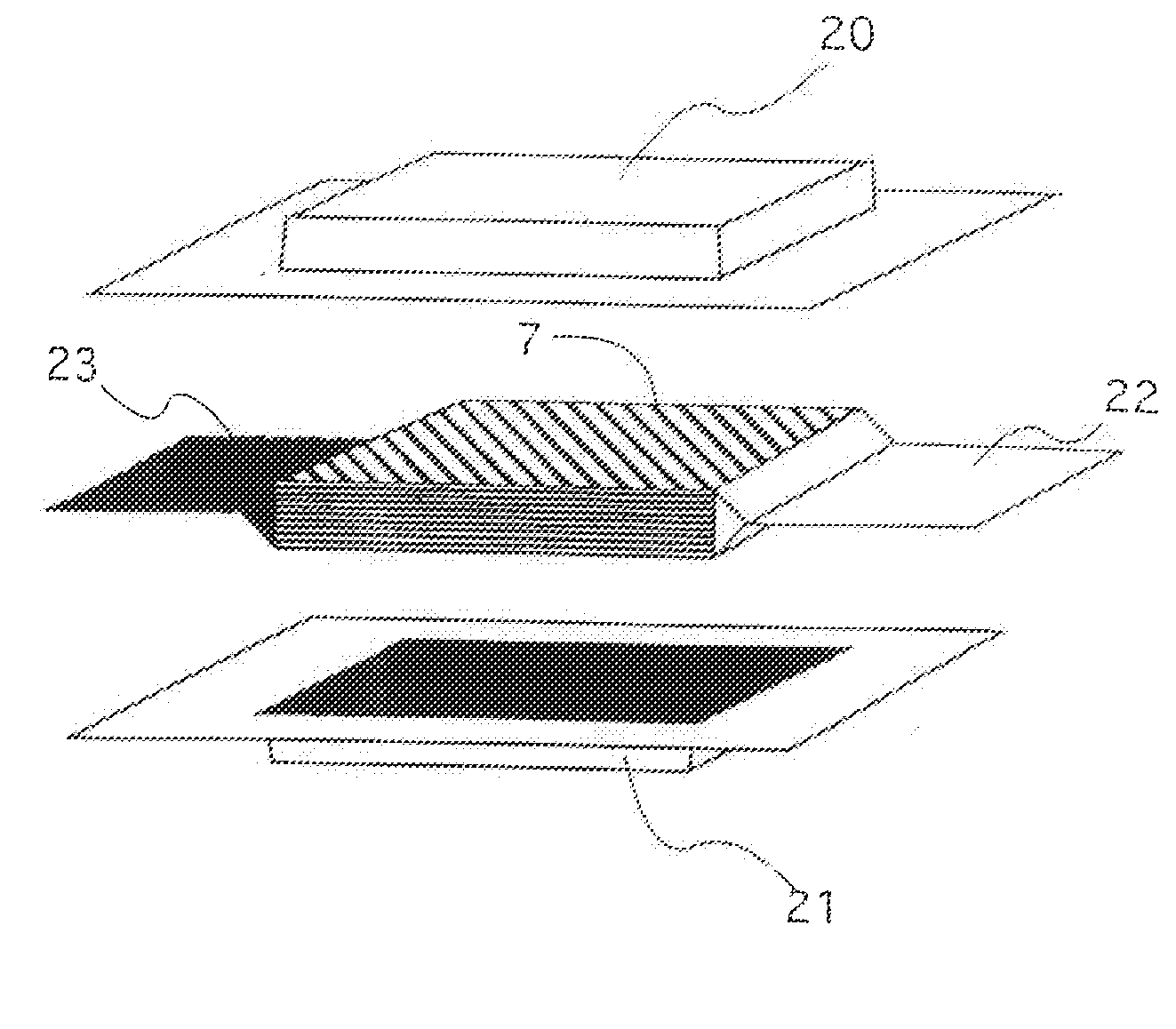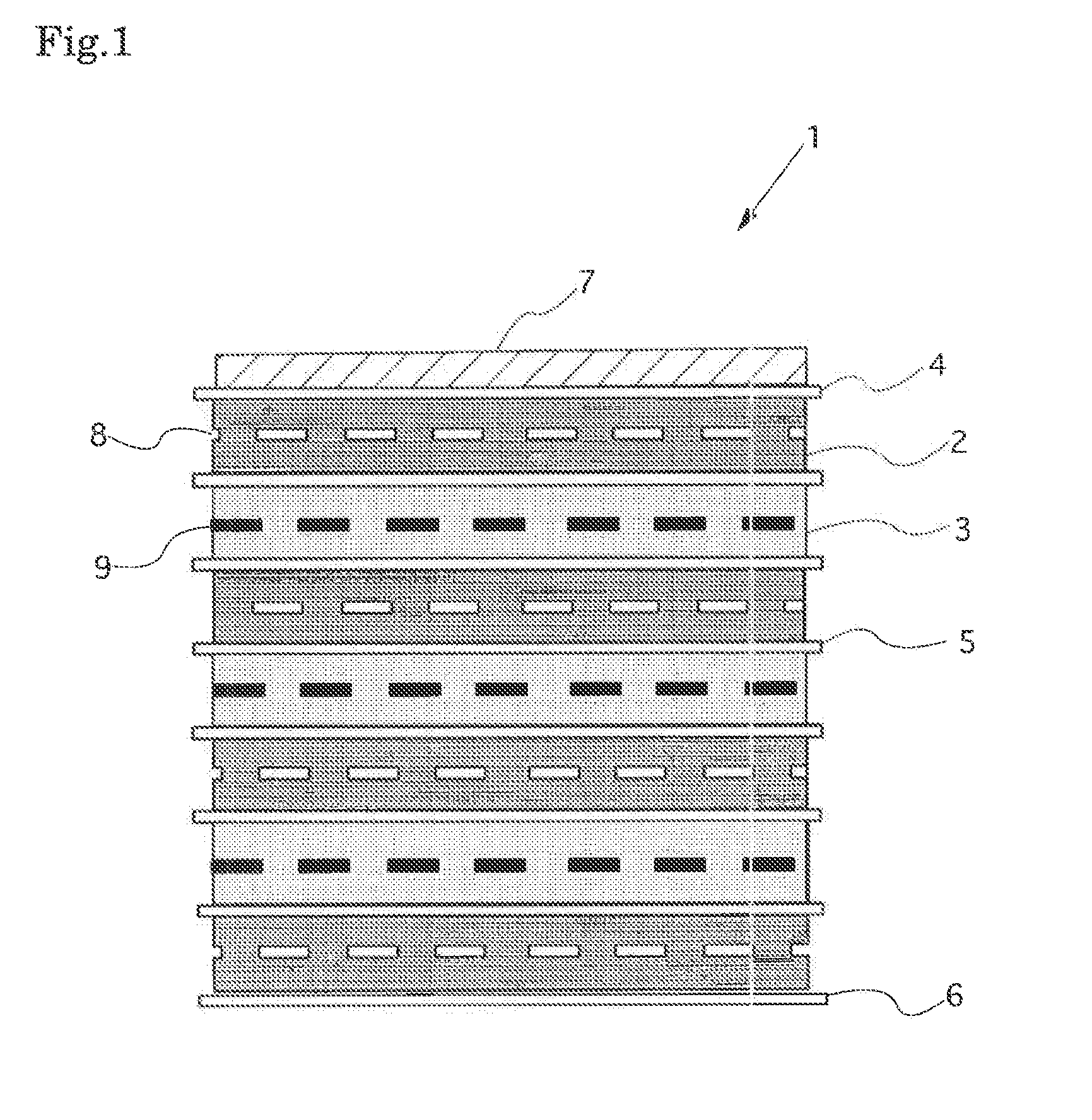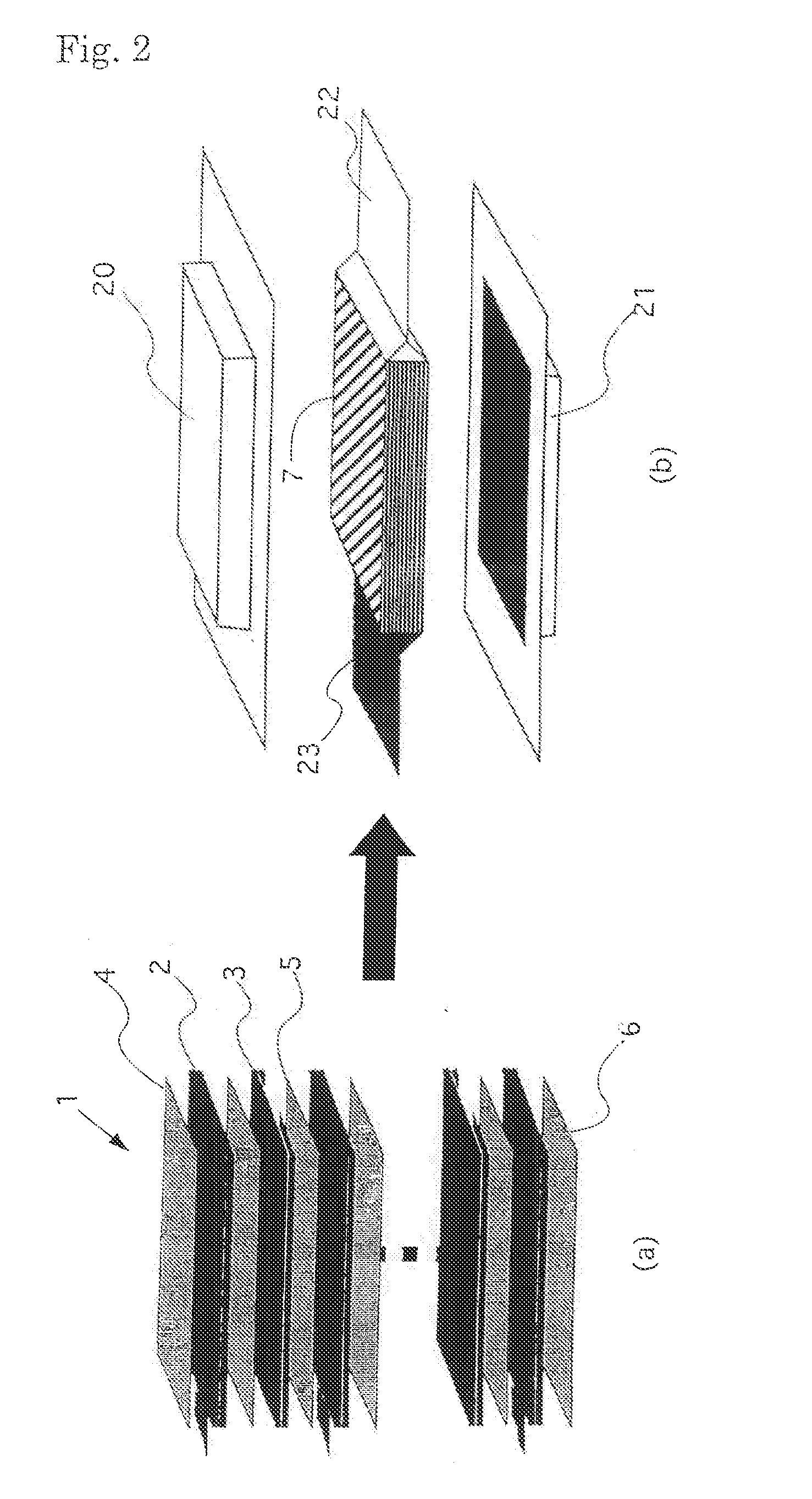Coated electrode and organic electrolyte capacitor
a capacitor and coating technology, applied in the field of coating electrodes and organic electrolyte capacitors, can solve the problems of low strength of base materials, inability to produce electrodes with low electric resistance, and material breakage or deformation, and achieve excellent uniformity, high conductivity and strength, and high energy density
- Summary
- Abstract
- Description
- Claims
- Application Information
AI Technical Summary
Benefits of technology
Problems solved by technology
Method used
Image
Examples
examples
[0085]Experiments carried out for examining characteristics of the coated electrode according to the present invention and the capacitor using such an electrode will hereinafter be described.
experiment 1
(Experiment 1)
[0086]Coated electrodes were produced by respectively using, as current collectors, an expanded metal made of aluminum, a punching metal made of aluminum and an electrolytically etched aluminum foil to conduct experiments examining characteristics of the respective coated electrodes.
[0087]A coating material prepared by adding and mixing ion-exchanged water with 87 parts by weight of activated carbon made of coconut shell having a specific surface area of 1,740 m2 / g and an average particle diameter of 5 μm, 4 parts by weight of acetylene black powder, 6 parts by weight of SBR type binder and 3 parts by weight of carboxymethyl cellulose and having a solid content concentration of 30% was applied on to both surfaces simultaneously of each of the current collectors shown below under conditions of a coating speed of 2 m / min by means of a vertical double-side coater of die set system and dried under reduced pressure at 200° C. for 24 hours.
[0088]Incidentally, the air permeab...
example 1
[0108]Electrolytically etched aluminum foil[0109]Production process: A hard aluminum foil was electrolytically etched in a hydrochloric acid etching bath, thereby producing an etched foil.[0110]Thickness: hard foil of 40 μm.[0111]Width of base material: 500 mm.[0112]Coating thickness: 152 μm.
PUM
| Property | Measurement | Unit |
|---|---|---|
| apparent density | aaaaa | aaaaa |
| thickness | aaaaa | aaaaa |
| hole diameter | aaaaa | aaaaa |
Abstract
Description
Claims
Application Information
 Login to View More
Login to View More - R&D
- Intellectual Property
- Life Sciences
- Materials
- Tech Scout
- Unparalleled Data Quality
- Higher Quality Content
- 60% Fewer Hallucinations
Browse by: Latest US Patents, China's latest patents, Technical Efficacy Thesaurus, Application Domain, Technology Topic, Popular Technical Reports.
© 2025 PatSnap. All rights reserved.Legal|Privacy policy|Modern Slavery Act Transparency Statement|Sitemap|About US| Contact US: help@patsnap.com



